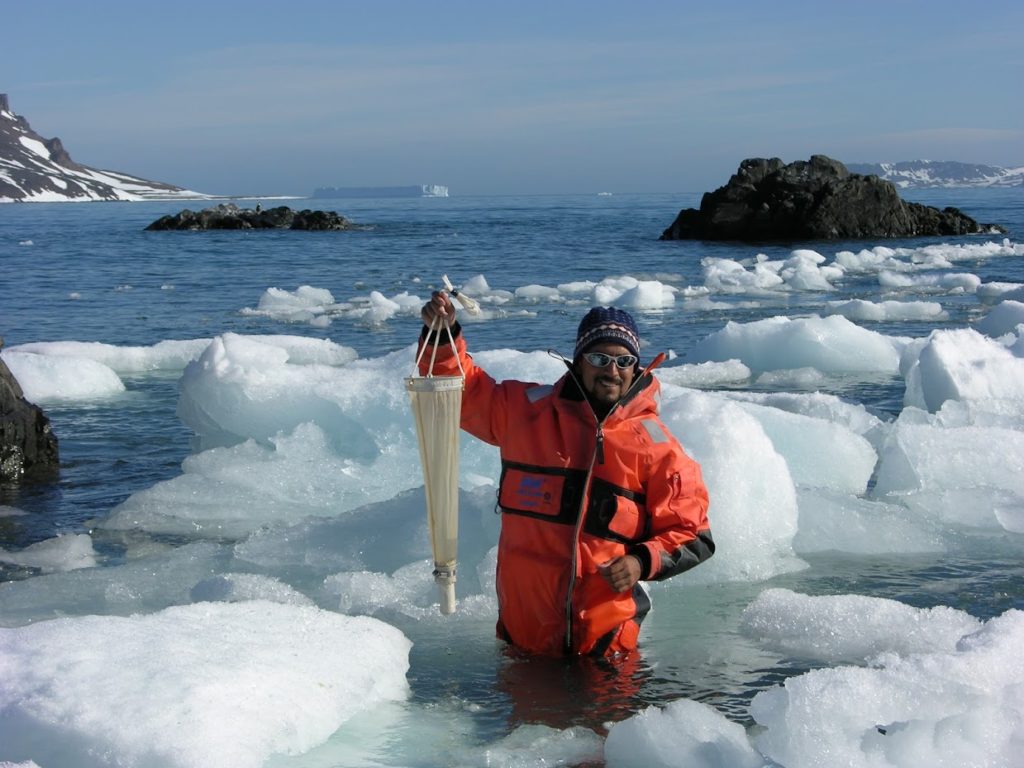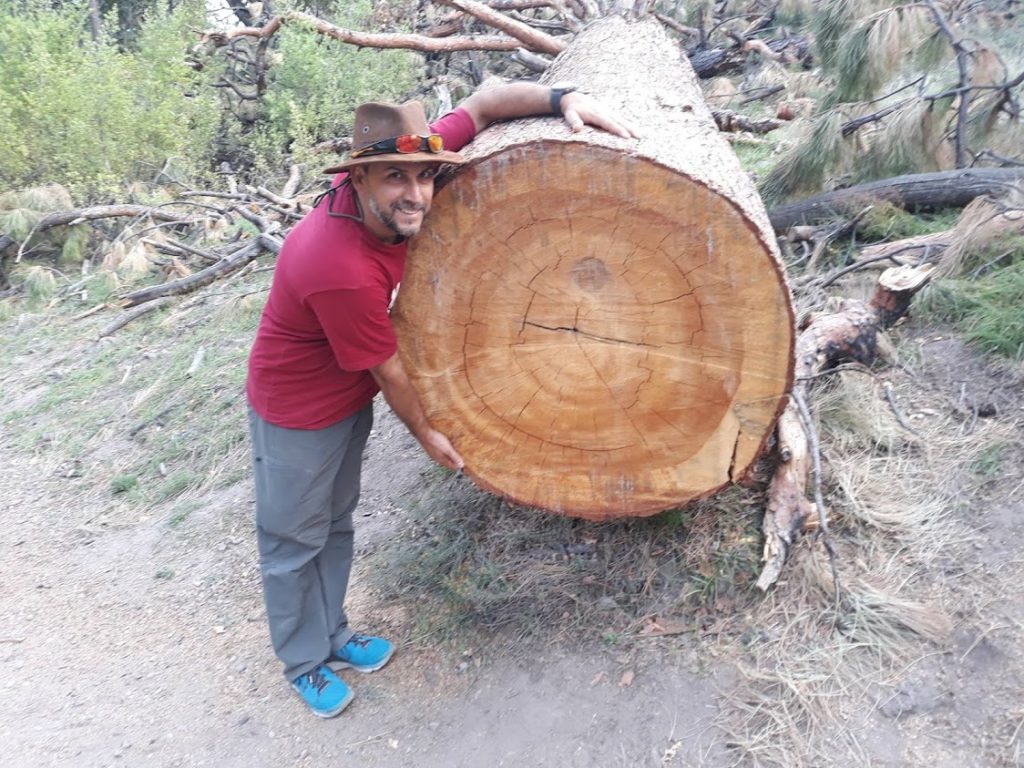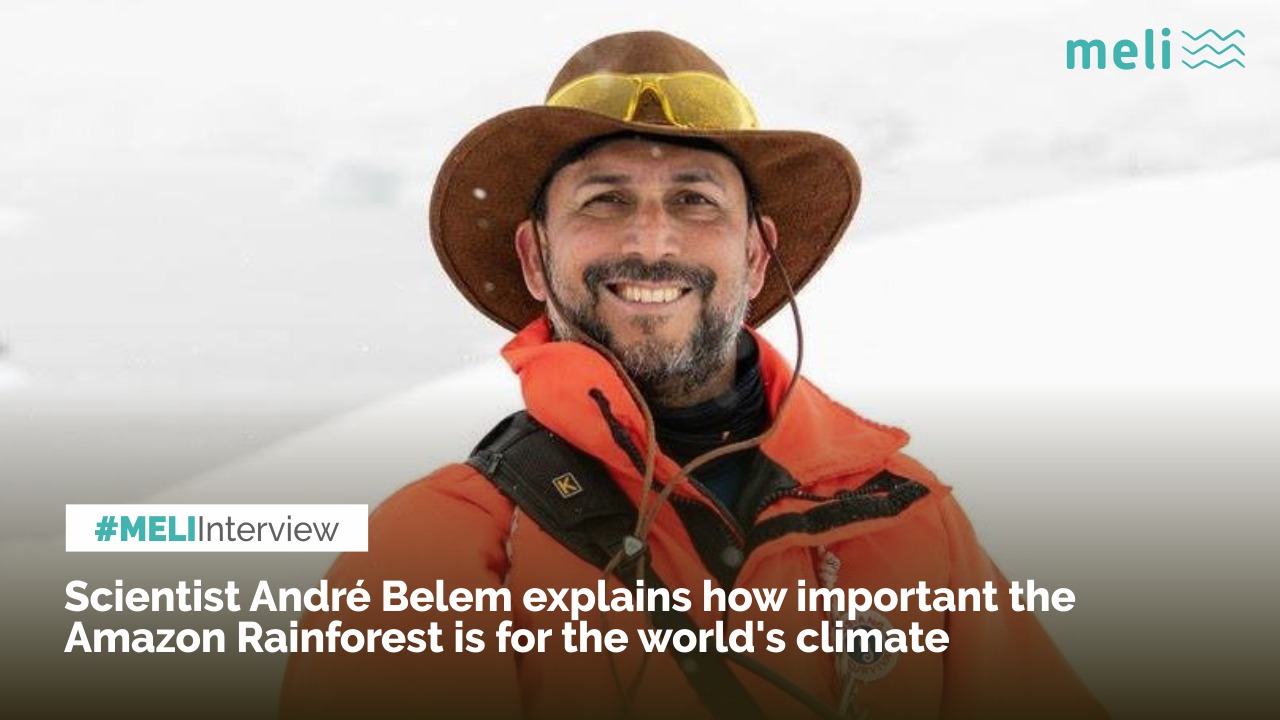André Belem is a researcher at Niterói Federal University in Brazil, studying the climate and its changes from the remote past (~100 million years back) to the present. In an interview with Meli he explains why we need the Amazon Rainforest to keep the world’s climate in balance.
Authors: Willy Hagi & Kyra Hertel
Leia em Português. Auf Deutsch lesen.
André, tell us a bit about yourself. What inspired you to study the oceans and the climate? How do you inspire others to take a journey like yours?
My journey on this planet has been linked to the oceans since I was born. I’m from a coastal city and my family is a mixture of caiçara (people from a part of the Brazilian coast) with many European roots. The sea is my home. Despite having a family of “engineers”, I wanted to be an oceanographer from an early age. The sea and the climate are one. In college I quickly learned that water is the connection between everything – water is life. My studies in oceanography also took place in a city “by the sea” (Rio Grande, in southern Brazil) and took me through German lands, to the city of Bremerhaven. Here, I went to do my doctorate in Polar Oceanography at the Alfred Wegener Institut fuer Polar- und Meeresforschung. This was between 1998 and 2002. Already at that time we realized how sensitive the planet’s climate is.
“The sea and the climate are one. In college I quickly learned that water is the connection between everything – water is life.“

One of the main topics around the world today is the release of the most recent IPCC’s Assessment Report (AR6). Could you tell us what this report is and why it is important?
The IPCC report is a document built by a team of experts from the most diverse areas. It is a very intense and robust work with thousands of pages. In addition to representing the interpretation of the majority of the current climate scientific community, it also represents an evolution in our interpretation of climate and the impacts that we humans have on the planet’s climate. This report is not something that came out of nowhere. Its scientific basis has been built since the first AR in 1992. In 20 years we have evolved exponentially in the study of climate.
Can you give us a short impression of our planet’s health condition right now?
The health condition of the planet’s climate is not good. That’s because there are physical forces far beyond our control that were in dynamic balance during geological ages. If we consider the sun, the position of the planet and how much energy arrives at the surface, we were in an end-of-warm (interglacial) equilibrium that would slowly enter a cooler phase. But since the industrial revolution, humans are causing this balance to be lost. I could say that the situation is now compared to a middle-aged person who only eats fat, smokes, drinks, doesn’t exercise and has zero self-respect. The situation is very critical. The planet will survive this but we certainly won’t.
“The planet will survive this but we certainly won’t.“
Let’s zoom in to a more local dimension. What’s happening in the Amazon Rainforest at the moment and why is that important for the climate?
The local dimension is just an illusion of our limited mind. There is nothing local about a system that is all interconnected. An example: what good is it for you to buy food from a local producer who imports inputs from another region of the planet that is being destroyed precisely to plant these inputs? The Amazon is a universe of diversity in the equatorial region and bordered by the Atlantic. The Atlantic is responsible for the thermal balance of the planet. The planet’s equator gains heat from the sun that is redistributed by ocean currents. Part of the exchange system is based on water vapor that is released into the atmosphere. Some of this moisture is then connected with a system we call the South American monsoon, which is heavily controlled by forest evapotranspiration. When the forest dies and shrinks in size it ends up affecting the distribution of moisture in the atmosphere and the heat balance carried by the oceans. On the computer, we can “remove” the Amazon rainforest. The results are catastrophic, ranging from the desertification of part of the American West, to mega-floods in Europe.
“On the computer, we can ‘remove’ the Amazon rainforest. The results are catastrophic […]“
The effects of a changing climate are apparent. In Europe, this summer’s floods and extreme heat waves increasingly threaten people’s livelihoods. How do these extreme weather situations emerge? Is climate change related?
Totally related. As I said, the system has a dynamic equilibrium where systems adjust on top of each other as geological climate change propagates in events with frequencies of hundreds or even thousands of years. When man put energy into the system through greenhouse gases and deforestation, the system tends to react abruptly. The mega flood in Europe this year is an event with a recurrence time > 400 years. It doesn’t mean that it wouldn’t happen naturally, but with absolute certainty, our impact on the climate causes events like this to happen more often. One detail is that European countries in general are quick to readjust norms and mitigate impacts, but the same does not happen with poorer countries that act more in reaction than in prevention.

Global climate systems are very complex. It could be difficult to comprehend that the destruction of the amazonian rainforest might have an effect on, for example, the European climate. How can we connect the deforestation of the forest to the occurrence of extreme weather situations?
I can give a very simple example that anyone can do at home also with your kids.You just have to believe that the Earth is round! If you take a bike and put it upside down, you can turn the pedal and the wheel. You can start turning the wheel slowly. You stand in front of this wheel and have someone slowly pour water over the part opposite you of the wheel. The wheel will spin and carry this water from one point to another. If you spin it slowly, maybe just a few splashes will hit you. The Earth rotates at the same speed every time, but the energy that carries moisture can be increased, in our example, by turning the wheel faster. You will see that the tendency is for the water to be transported more quickly and the splash becomes a real shower, depending on how much water is thrown over the wheel.
Without the forest to “dissipate” and help transport energy across the equator, the moisture distribution system is impaired. On the one hand, some places will never receive rainwater again and will become desert. Others will simply “drown” from so much water (not to mention the destruction of storms). Another problem with power distribution, which will be felt a lot in Europe, is that in winter the effect is the opposite — colder than normal and many snow storms.
“Without the forest to ‘dissipate’ and help transport energy across the equator, the moisture distribution system is impaired.“
What can we do to protect these ecosystems, such as the Amazon Rainforest? Do you take part in initiatives related to this?
Something very simple that in everyday life anyone can do — make conscious consumption. Know where the raw material of the things you buy comes from, where the food comes from. Furthermore, every politically conscious person closely follows his political representatives, and can apply pressure. The simple fact of demanding a minimum of ethics from the rulers would already be of great help. I agree that it is not a simple task. I myself am responsible for training engineering students here at my university in Social and Environmental Responsibility and I confess: it is not easy even for them who live here much closer to the forest and the problems. But if the effort is constant and continuous, we can change a lot for the better.
“But if the effort is constant and continuous, we can change a lot for the better.”


4 Replies to “Meli Interview — Scientist André Belem explains how important the Amazon Rainforest is for the world’s climate”